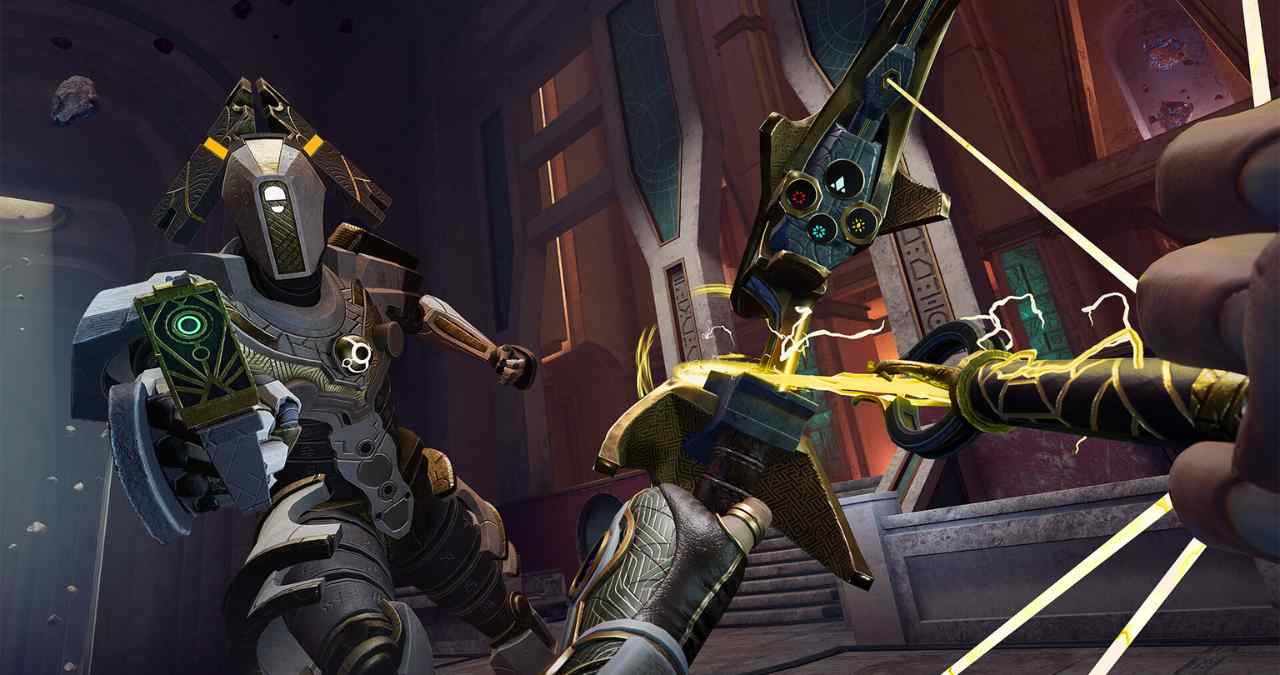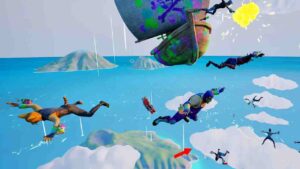Reach is starting to carve out an identity, and its latest trailer offers a sharper view of what that might look like in VR. Revealed during a recent showcase, the new footage highlights traversal across vast landscapes, close-quarters combat, and towering biomechanical enemies that loom over the player with real weight.
It’s a world that feels abandoned but alive. Environments shift between monolithic structures and wide, open stretches, suggesting a focus on movement and mood as much as action.
Traversal and movement mechanics take center stage
One of the more striking features in the trailer is how fluidly the player moves through the world. There’s climbing, sliding, and jumping across terrain that looks layered and vertical. Rather than relying on teleportation or traditional VR locomotion shortcuts, Reach appears to build its movement around momentum and physicality.
This points to a design that values kinetic interaction. The goal isn’t just to look at the world, but to feel your way through it—grabbing ledges, dodging attacks, and navigating tight spaces under pressure.
Combat feels reactive, not overdesigned
While not much is shown in terms of enemy variety, what’s there hints at a grounded combat loop. The enemies shown are large and imposing, but the focus doesn’t seem to be on frantic button-mashing. Instead, it looks like timing, dodging, and spatial awareness are key to survival.
Weapons and attacks aren’t flashy or overloaded with effects. Everything feels measured, letting the environment and enemy scale do most of the heavy lifting. This restraint suggests a cinematic pacing, where each encounter is meant to feel like a moment rather than a system grind.
A world built for mood and scale
Visually, Reach leans into minimalism with purpose. The color palette is muted but striking, with bold shadows and heavy lighting contrast. Structures rise like ruins of something ancient and technological, and the sound design hints at isolation rather than chaos.
It’s reminiscent of games like Shadow of the Colossus or The Last Guardian, where the emotional tone comes from silence, scale, and tension instead of constant noise. In VR, this kind of direction can have real impact when done right.
Early glimpse, but a clear artistic direction
There’s still a lot we don’t know. The trailer doesn’t explain narrative, progression, or even platform availability beyond VR. But it shows enough to make the case that Reach isn’t chasing trends. It’s positioning itself as a more atmospheric, grounded experience in a space that often leans toward spectacle.
Whether it can deliver on that tone across a full campaign remains to be seen. For now, it’s at least aiming for something more focused letting space, movement, and presence take the lead.
Virtual Reality Explorer & Game Reviewer
Always the first to plug in. VRSCOUT dives head-first into the most immersive VR worlds, analyzing mechanics, comfort, innovation, and that elusive “presence” factor. If he says it’s worth it, it probably is.




